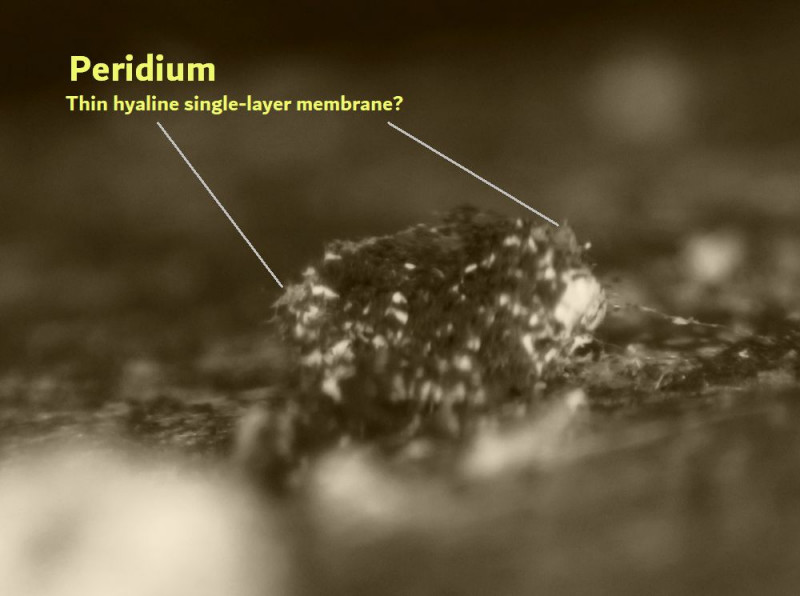I have a small collection of 18 myxocarps of what looks like to be a Diderma for its amorphous lime covering on the peridium, but nothing is matching in the genus (or Didymium) and the large lime granules indeed suggest to be a Physarum instead.
Description:
Gregarious, spherical (slightly compressed) myxocarps about 0.7 - 1.0 mm wide, sessile or a very tiny stalk (more a continuation of the plasmodium). I could not find a columella (quite sure it is absent) and not sure if the peridium is a single or double layer but I just saw a very thin membranous single layer on which the lime granules are sitting on. Capillitium lime granules large, angular, Y-shaped or lobed, bulky.
Spores 9-12 um, minutely and regularly spinose (short), without obvious ridges or dark edges, strangely many are collapsed and non viable.

There is indeed Physarum didermoides with spores 12-16um and P. diderma with spores 9-11um, but these are double-layered peridium and I can't really detect it. Also the outer lime of these two species is more cemented rather than fluffy. In the section of single-layer peridia, I have considered P. licheniforme but they are described to be smaller (up to 0.6mm) and on grass, P. ovisporum but I cant detect easily a pale line; P. cinereum but this grows on grass and leaves and P. daamsii, but this is a much smaller species (0.5mm max) and peridial lime is different.
So I am quite blocked on this finding.


